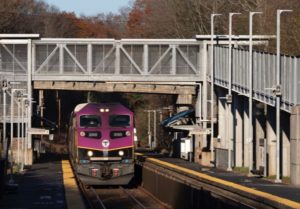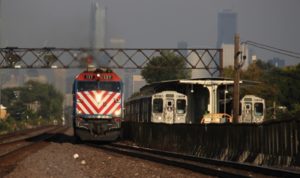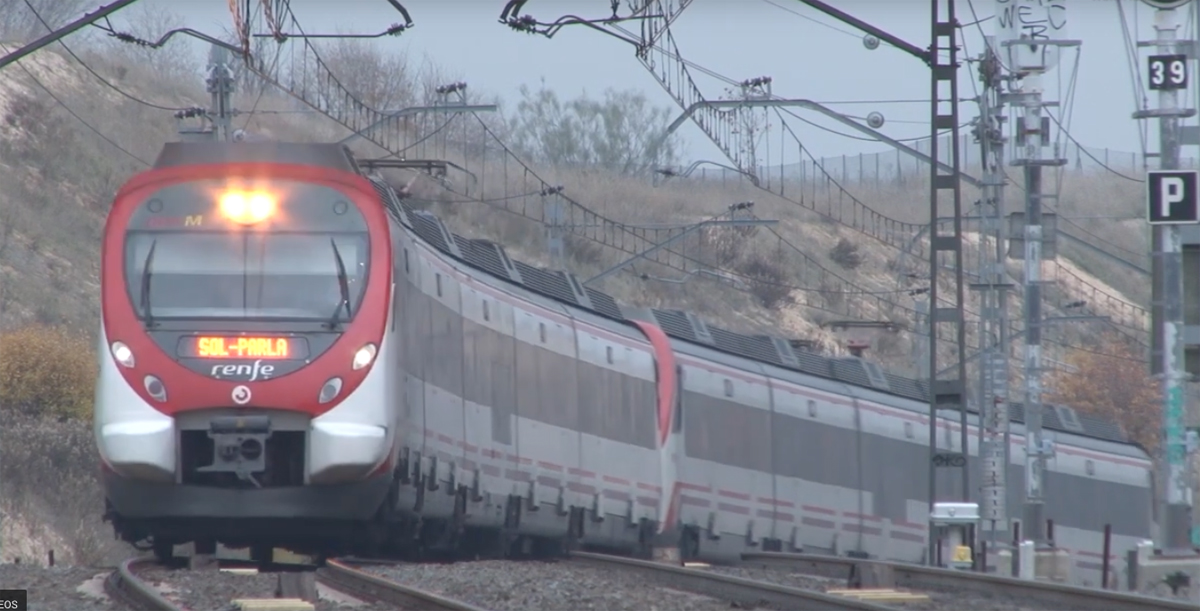
Scott A. Hartley
As transit agencies plot their recovery from the devastating effects of the 2020 pandemic, a common denominator is emerging: more riders need city buses than suburban trains. The revelation portends diminishing investment in rail.
Commuter rail systems typically serve affluent suburban residents, more of whom work in office environments. In large part, those offices have been closed since spring, as workers swapped cubicles for their kitchen table or spare room.
“COVID-19 reduced our ridership to the kind of the folks who are utterly dependent on transit,” said Steve Poftak, general manager of the Massachusetts Bay Transportation Authority (MBTA), speaking at a meeting of the state’s Fiscal and Management Control Board. “It’s really made a tremendous impact on our staff, understanding how people depend on the transit system.”
The MBTA’s buses are now carrying 41% of 2019 passenger levels, while its commuter rail lines are stuck at 12%. It’s a tale of numbers repeated across the country.
In New York, Metro North ridership is 16% of pre-COVID levels, while city buses are near 50%. Chicago Transit Authority buses are back to 70% while Metra ridership remains at 10%.
Metrolink, the Los Angeles commuter rail operator, is running 10% of pre-COVID passenger loads while Los Angeles Metro’s buses are 50% full.
American Public Transportation Association data, aggregated across all U.S. cities, reveals that ridership for commuter rail was off 90% in the April-June period, compared to a decline of 65% for bus ridership.
As the pandemic drags on, many large companies that initially expected to bring workers back in January are now delaying a return until July 2021. When those workers head back to the office, the traditional 9-to-5, Monday-through-Friday workweek may be replaced with staggered shifts, alternate office days and optional work from home.
An IBM study found 75% of those now working remotely want their employers to continue offering that option.
“We have to basically adjust ourselves to be a different Metra as we come out post-COVID,” said Jim Derwinski, CEO of Metra, speaking at a board of directors meeting. “Our core rider is from the suburbs into the city and many businesses will be making great business decisions in the upcoming years, how they will structure their business, and that will definitely affect Metra’s ridership in the long run.”
Companies have learned that telework works, and some are questioning the need for large, expensive office space. In Detroit, Tenneco left a brand new $23 million office building vacant, putting it up for lease. Nationwide Insurance closed six offices and will make remote work permanent in five states.
In Manhattan, new office leasing is at a 25-year low, according to global real estate firm Cushman & Wakefield, with nearly one in seven spaces now vacant.

TRAINS: David Lassen
Catherine Rinaldi, president of MTA Metro-North Railroad, says, “People who have been riding before don’t necessarily have to ride every day. We’ve never experienced anything like this as an industry.”
On days when professionals do come to the office, indications are they may prefer to drive, further reducing demand for commuter rail.
Monthly surveys by the Chicago Loop Alliance show that driving is now the primary choice for those coming to the city’s downtown. Cars.com research found 62% of Americans leaving public transportation for the privacy of their own automobiles.
But there are many workers who can’t work from home, who are employed at low-wage jobs, and may not own a car. They need public transit.
The MBTA calls these “transit-critical” populations, and they are the focus of how the nation’s fourth-largest transit system plans to restructure its network.
Planners are categorizing each subway, light rail, commuter and bus line along a four-axis grid that will determine the shape of Boston’s future transit system.
Most routes with high ridership serving transit-dependent customers will maintain existing service, and some may see increased service. Routes on the other end of the spectrum — with low ridership and less rider dependency on transit — are most likely to lose service. For other lines, the budget available to keep them running will determine future service levels.
The MBTA identified 65% of bus routes as a top priority, along with all subway and light rail lines. But only the Fairmount commuter rail line falls into that category.
Although further study will look at the MBTA’s commuter lines station by station, drastic service reductions are being discussed. Options include eliminating weekend service, reducing peak-time and mid-day schedules, or ending weekday service after 9:00 pm. Some stations could be closed. Service changes would take place in July 2021.
Once these cuts are made, the MBTA considers them permanent. “We’re not going to rebuild the system back exactly as we have it today,” said Kat Benesh, MBTA chief of operations strategy, policy, and oversight, speaking at a recent public meeting.
Capital investments are also on the chopping block or could be delayed by years. The MBTA is looking at reallocating $150 million of annual federal formula funds from capital projects to preventive maintenance, at least for the short term. Orders for new rail cars could be canceled or postponed, and the current fleet could be trimmed to reduce maintenance costs.
At more than $400 million per year, commuter rail represents the largest budget item by category of service for the MBTA. The agency has been studying a plan to electrify its commuter rail system and run service all day at 15 to 30-minute frequencies in both directions, at a cost of up to $30 billion.
“The conversations we’ve had about bus and rail transformation until now have been about, keep what we have and layer new stuff on, but we can’t afford that,” said Stephanie Pollack, secretary of the Massachusetts Department of Transportation. Trains News Wire has learned that an update will be provided to the MBTA’s oversight board in the coming weeks.
Large, expensive commuter rail, heavy and light rail projects are natural targets as states and cities face budget shortfalls while future post-pandemic travel patterns are unclear. Infrastructure projects that are underway and fully funded will continue, but those that haven’t started are at risk amid a larger questioning of where limited resources are best spent.














